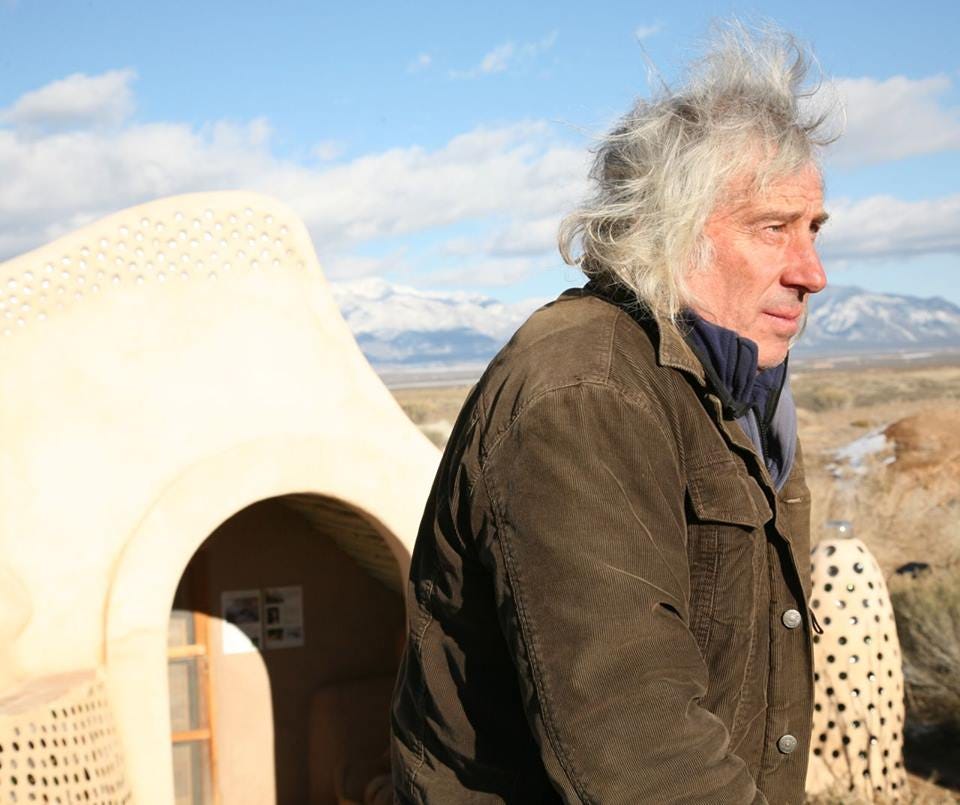Earthship is a concept of over 40 years and yet the first one ever built in Europe was in 2000. The idea is a trademark of Michael Reynolds — a US architect. In the 70s, Reynolds envisioned a home which would have three exciting traits — self sustainability, construction utilizing basic and recycled materials for the most part and affordability to the average man.
So, what is an Earthship ?

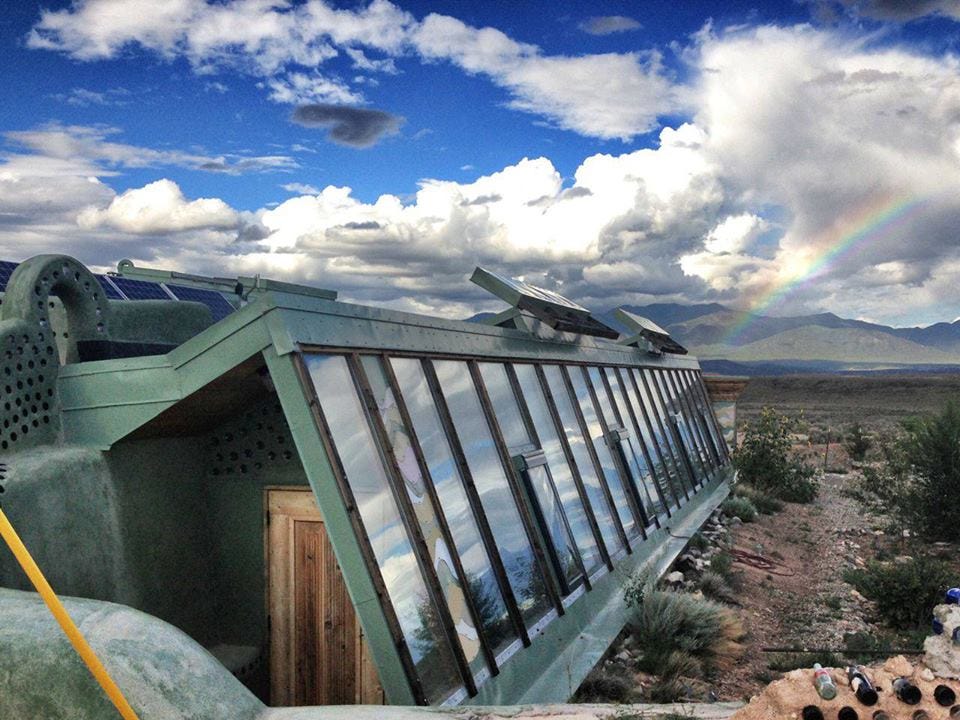
It’s a home completely or for most of it’s part off the grid. That means no electricity and water networks. There is nothing to tie it to any utility services, which eradicates dozens of potential problems.
But is the Earthship primitive ? Absolutely not.
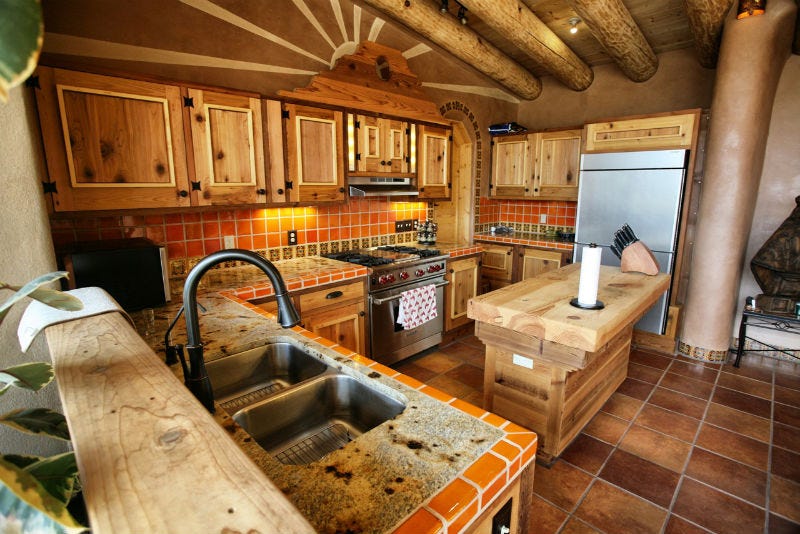

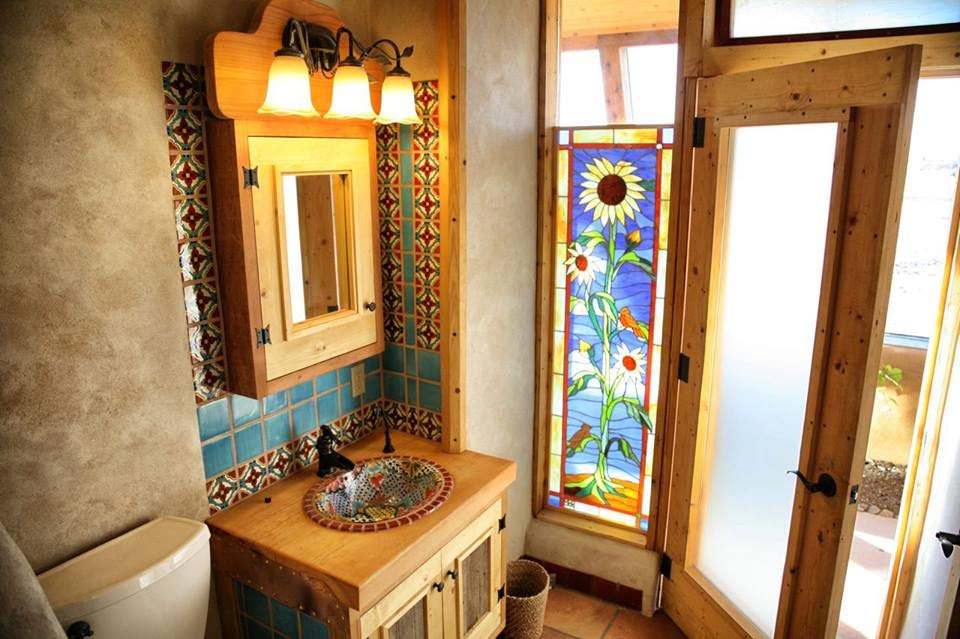
It’s true you don’t use any commercial services, but it’s only because you don’t actually need them. The design of this home generates it’s own resources like fresh water, electricity and heating, by using what nature already give us for free. It also involves growing your own food, so in the end you pay no taxes, you spend less or even nothing on food and you live comfortably as a regular 21st century human.
How does the concept achieve all that? We’ll explain in this thorough article.
The construction
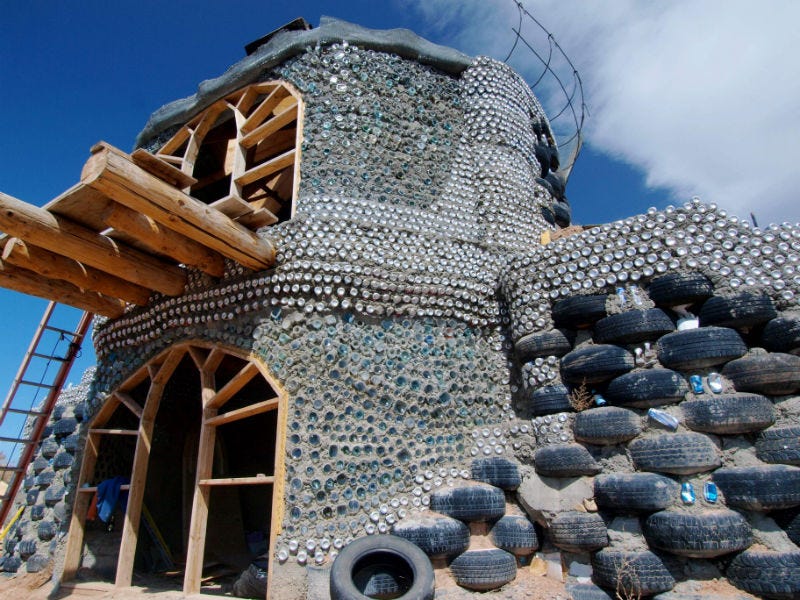

As it’s not dependent on the regular services we need to live our lives, it can be built in most locations. You need free space and access to sunlight as it’s key to every system in the home. The concept of the Earthship is simple enough that you can build it yourself, even if you lack the most basic construction skills.
A mid-age couple from Toronto, Canada built one for themselves without the help of anybody else or any construction equipment. What they needed were plans for the building and three months to construct a three-story house, fully equipped for living.
For materials, you can use everything able to categorize as thermal mass. Thermal mass is a concept of architecture design, which allows the mass of the building to provide control over temperature fluctuations.
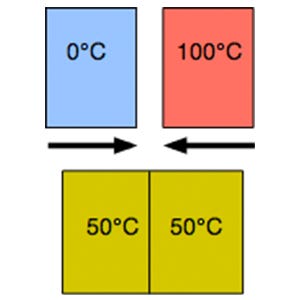
A swing back to elementary physics, the laws of thermodynamics state that any body will heat up if the adjacent material is 1 degree warmer than it is. Similarly, it will also cool down when the adjacent material is 1 degree colder.
Every object strives to achieve heat balance. This physical law is the backbone of the Earthship’s contstuction.
That literally means it protects the indoor space from heat and cold, while it keeps a constant or close to constant temperatures. It absorbs or releases heat, based on the amplitude of the temperature inside to outside the house. For example, during the day, when the sun shines it will absorb the warmth, protecting the home from overheating, but when it’s night time and the temperatures drop, it will release that same heat into the house and keep the temperature levelled.
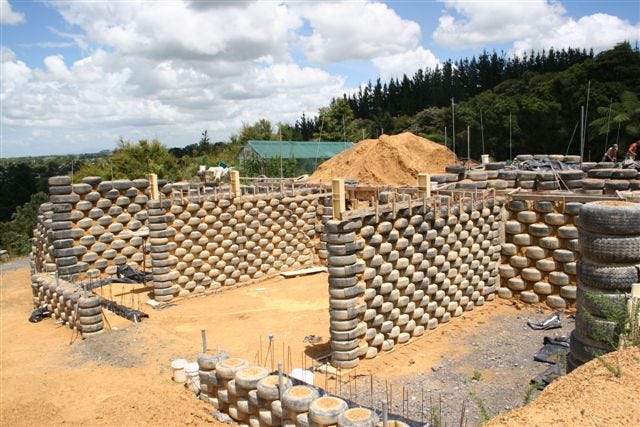
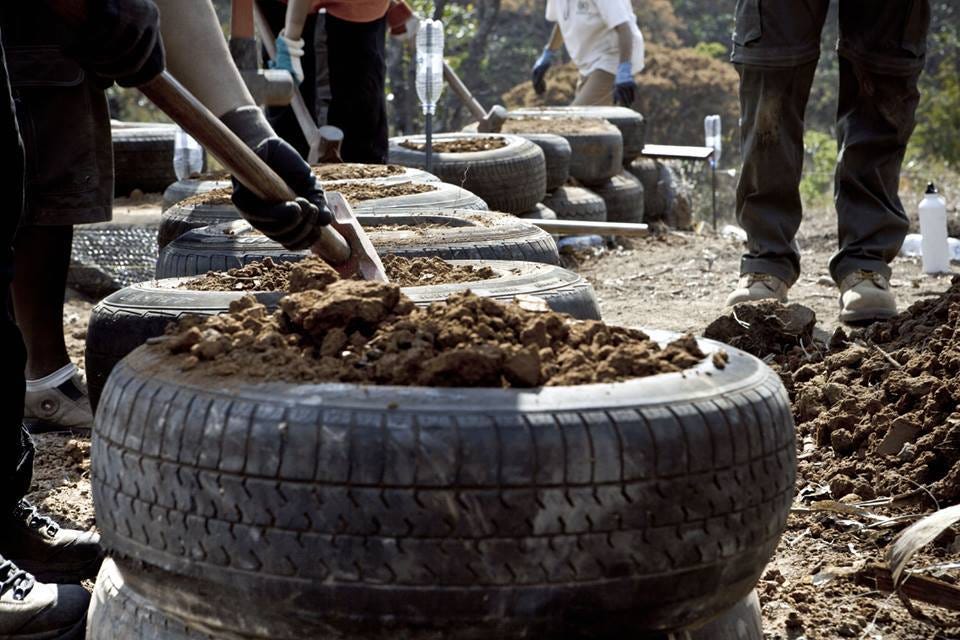
The most common building block of the house are dirt filled tires. You can get zero cost tires from the dozens of used tire yards in every country in the world. There are people that actually will pay you to get them off their hands. The dirt you can get from the very construction site. The tools required are a shovel and a sledge hammer. The process is extremely simple, but requires a lot of physical work. It’s a two man job — one shoves dirt into the tire and the other hammers it in a consistent and fluent manner. What you get in the end is compressed dirt into a perfect cylindrical shape (that is if you hammered it properly). That is your Earthship brick. Those are then stacked, just like you would with real bricks, into the wall shapes of the design.
The inside walls, which don’t carry the roof can be made by stacking used plastic bottles or tin cans and using concrete as a bonding agent. As a finish you can place a thick layer of adobe on each side of the wall. These can be used to also bond the different tire walls.
Finally, the roof is made of trusses and vigas.

All walls are thoroughly insulated from all but the bottom and south side to prevent heat loss during the cold seasons.
The bottom is directly linked to the Earth and when cold seasons come upon, the building draws heat from the soil and the natural geothermal energy. In modern constructions that link is severed with a thick concrete bedding.
The south always looks directly at the equator (north side in the southern hemisphere) because it allows for the most exposure to sunlight, which is the main source of heat.
It’s mostly made of large glass sheets as it’s the only place you want the heat to come in at all time. It’s also sloped to the perfect angle to capture the rays perpendicularly for as long as possible. You don’t want any reflected light as it will lower the efficiency of your home. This designs allows for autonomous control over the inside temperature. Little to non auxiliary heating is required.
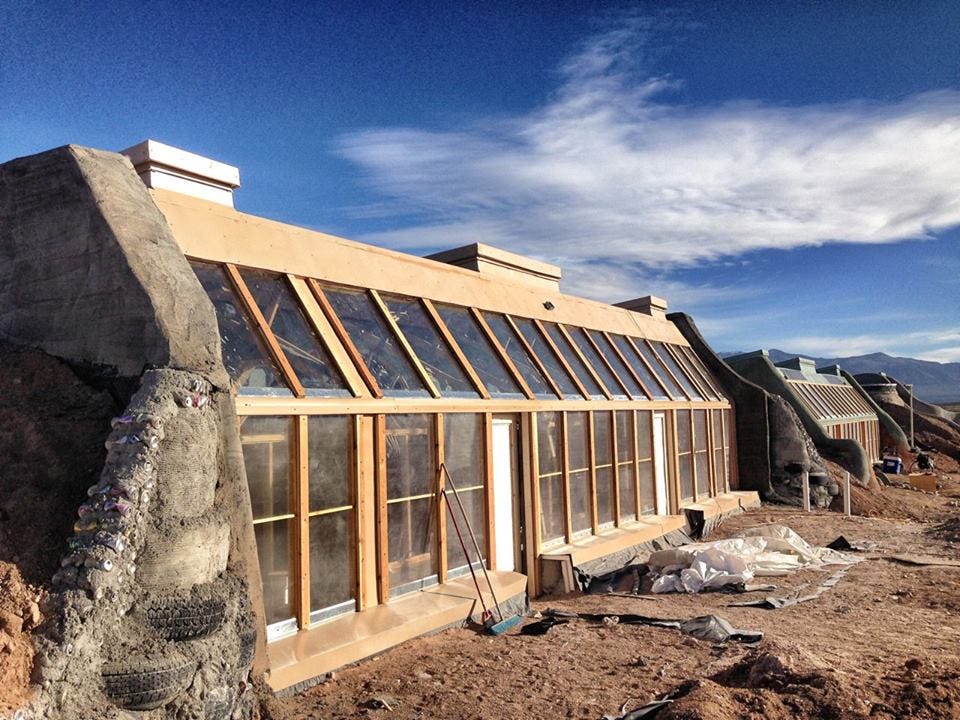
The Utility Systems
Electricity
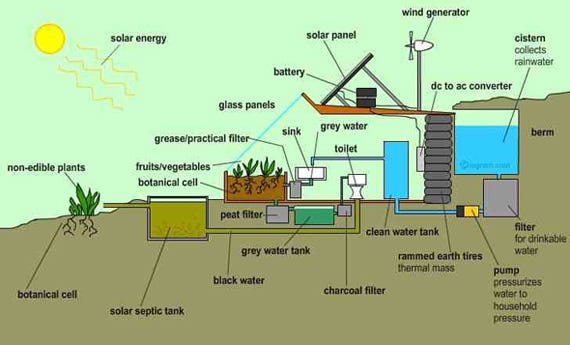
The electricity, as you probably suspect is provided by solar panels located on the roof and even some on the side facing the equator. Additionally, if the conditions of the location allow it, meaning there are constant winds, a wind turbine can be installed.
Batteries are installed in a specialized room on or near the roof. They will collect the DC power generated and will store it for when the sun is down. Along them transformation modules are installed to convert DC to AC for a regular use inside the home. The wiring is connected directly to the converters and everything after pretty much follows the standard building procedures. This allows the inhabitants to use the same appliances like they would with the city grid.

Now the idea ends here, and it will provide enough electricity to cover your needs — lighting (reduced by the use of natural light), electrical appliances and hot water. Problems might occur if there is over-usage, but in those cases a diesel generator can be used.
You can add other sources of renewable energy like wind turbines, if you’re in a windy location. Furthermore, technology advances. So there are a lot of new materials and concepts to enhance electricity generation like piezoelectric rubber installed in the flooring. Should you want to maximize the potential, there are more things that can be done. Those, however, might be costly to the average user, so we’ll not cover them here.

Water
The water is where the brilliance in this design truly shines.
The Earthship uses a smart collection and recycling of rain water, snow and condensation to provide the needed supply. Well, you obviously can’t build one in areas where these are extremely limited, but for the most part of the world it’s perfectly applicable.
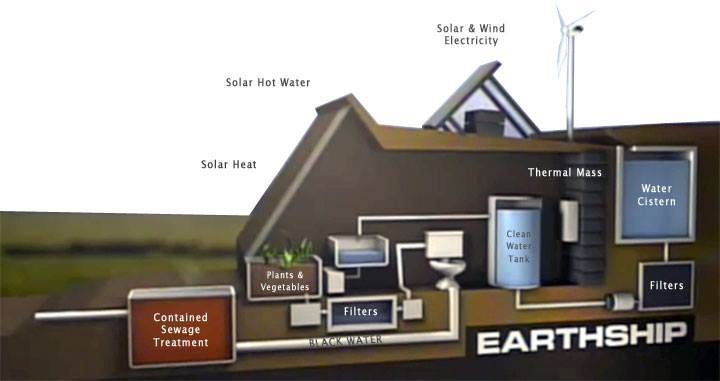
The water is collected on the roof and channeled into a tank. This tank feeds a water organization module. It filters it from any contaminants, be it hard particles, bacteria or whatever else, so that it’s perfectly good to drink. The module then feeds the purified supply into a pressure tank to accommodate it for regular household pressure. This water is used in the sinks and showers around the house.
After this step, the water starts to recycle. The drains in the bathroom and sinks, washing machines and the likes, connect to the greenhouse modules (there can be more than one). This is where vegetables and fruits are grown. They will provide BIO-graded food (no GMO, no contaminants) throughout the year. The conditions and crops are set to grown independent of the seasons or outdoor conditions.
The water flushed into these greenhouses, called Graywater, is mostly contaminated by soap, shampoo and food deposits. And by contaminated, we mean it cannot be used to drink from. However, it’s perfectly good to water the plants. Additionally, it can even bring nutrients, freshwater cannot. The soil and plants will act as the perfect filter to the Graywater. They will take what they need, enrich the supply and feed it further in the pipeline.
Once out of the greenhouses, the water is fed to the toilets to flush. The outcome of the toilets is called Blackwater. It can’t be used for domestic purposes any more, so it’s fed outside of the house to water non-editable plants, like a flower garden.
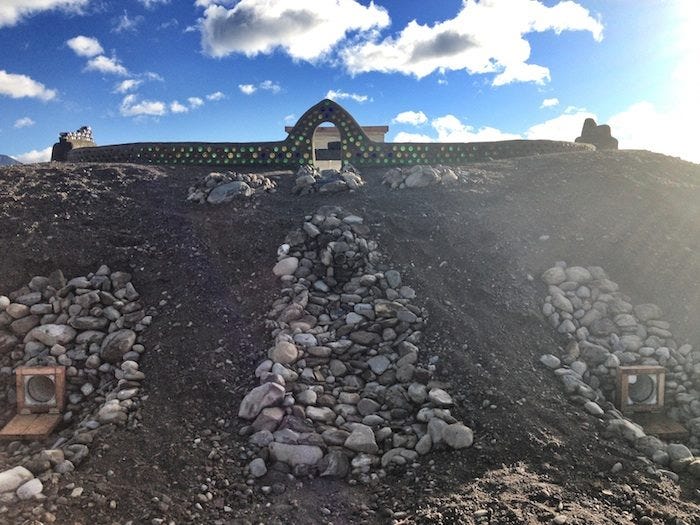
This pipeline uses the same water up to four times. This level of efficiency, although possible, is almost nowhere to be found in a city environment. It’s also the reason an Earthship can last literally on rain water only.
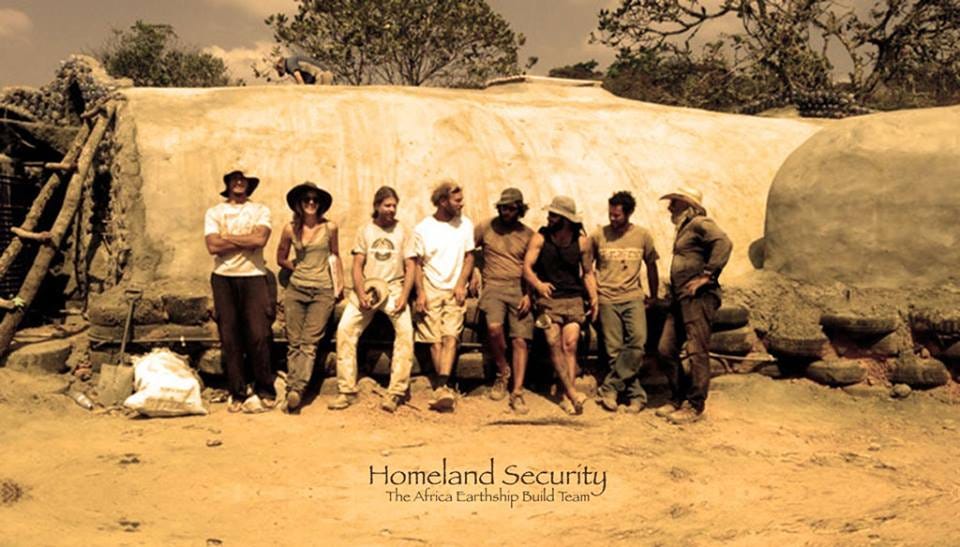
We have heat, electricity, water and food completely free, provided only by a smart design and care for the environment. Now, nothing is perfect in this world and the Earthship is not exception.
If there is even the smallest error in the design of the particular house, there can be major problems with over or under heating, shortage of electricity or water. This is why it’s essential to get the concept stage perfect to the location you are going to build and furthermore to be as careful and devoted to the construction process.
So, in the end, is the Earthship actually worth it ?
1. Self-sustainable
You are not dependant on any utility service, you would normally require. That means you don’t pay for it either. All you need for your domestic uses, you get free from the nature. All the comfort of the 21st century will be right where you want it. This house is not primitive igloo for you to hide from society, but a cozy shelter, which will provide for your life.
Regardless, it’s fair to say there are limitations to your usage. Use too much water and electricity and your supply will run out, leaving you stranded. The Earthship requires some sacrifice to 21st century consumerism. Anyone who thinks they get it ALL for free should reconsider.
With that in mind, you can freely use, but need to exercise conservation.

2. Eco and Heath Friendly
Huge metropolises like London and especially Beijing are heavily polluted areas. Pollution comes from a huge variety of sources — exhaust gasses, factory and industrial chimneys, chemicals used on a daily basis, artificial lighting, dust raised by everyday traffic. You name it, they’ve got it. And since you can build your home where ever your heart desires, you can easily chop that toxic part of your life out.
Also, because of the infrastructure and organization of such big communities, there are always reasons for you to constantly move in and out of apartments, especially if you’re on rent. Be it jobs, schools or bad neighbours, you can’t really stay in one place and be constantly comfortable. In the Earthship, you can. Sure, to live outside of the city you work and go to school at requires stable means of transportation, but the Earthship is there to stay.
Life inside the Earthship propagates more manual labor and physical activity. You will stand more and move more, which will invigorate and revitalize you on a daily basis, no work out needed (but optional ☺).
Last, but definitely not least, the Earthship is the greenest possible home you can imagine. It does no harm to you, or the environment. It literally converts trash (tires, bottle, cans) into a cozy and affordable home. And, it does so with minimal investment. And while we’re on the topic of investment, there is the…
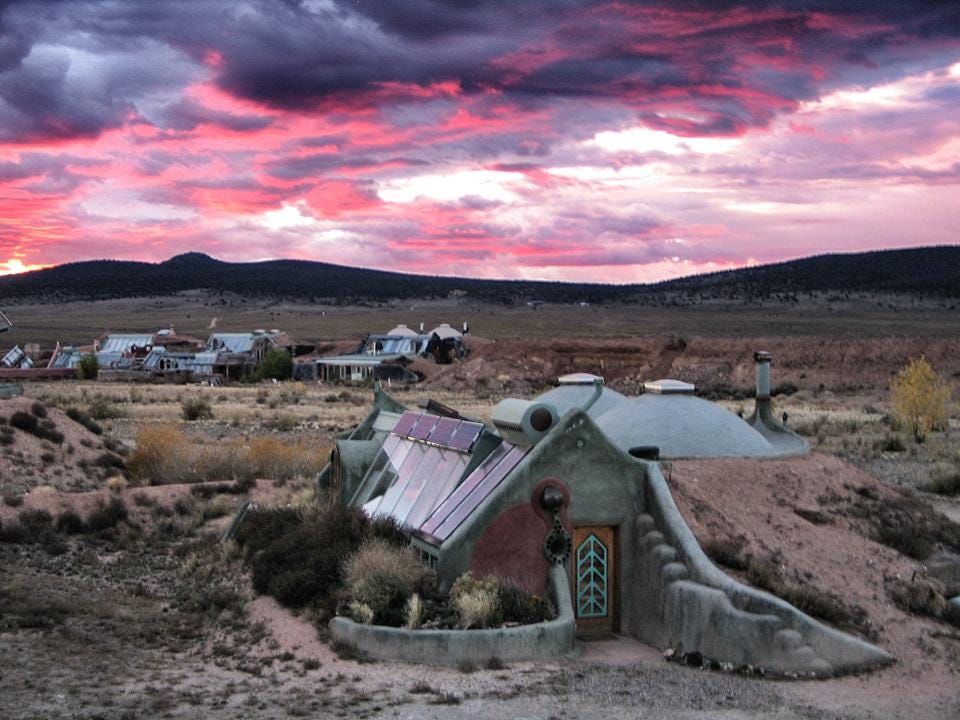
3. Cost
The biggest portion of your construction is constituted by dirt, recycled tire, tin cans and bottles. This you get for free, minus the manual labour. On top there is some low cost building materials like concrete and lumber.
Of course there ARE some expensive materials like the glass sheets and some metal here and there, but they constitute a small portion of your building.
The only real expensive things you need are the machines and technology that generate your power and make up the internal water system. Those you can’t go without, so you should plan your finances really well before you start, BUT:
You can have a perfectly suited home for 50–100 thousand pounds. Considering you have no bills, there are not many houses on par.
Also, if you’re on rent, you can save up for a few years and end the constant moving in and out of apartments, dealing with horrible roommates and landlords and services like movers and tenancy cleaning crews. — Tenants will know…
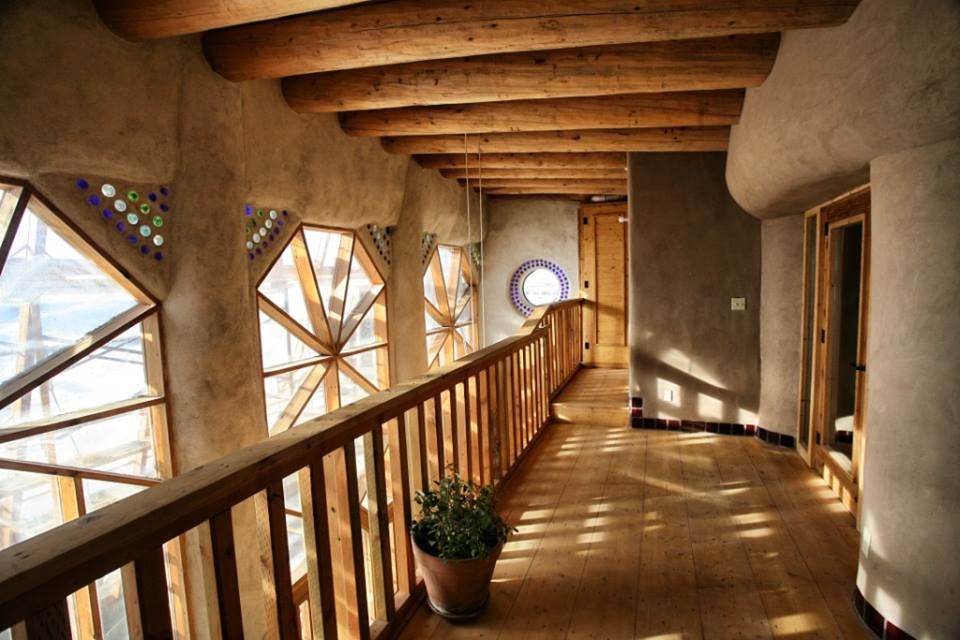
4. Easy Construction
If a mid-aged couple can do it in three months with no previous experience, then so can you.
Naturally, there is quite a lot you need to learn before you can do it all on your own, but Michael Raynolds has made sure you can tap insight directly from the source.
Other than that, the construction is pretty basic and simple, minus the installation of the water and electricity systems. Most of it is really just intensive manual labour and elbow greese.
And hey, if you can’t do it yourself, you can always count on Earthship Biotecture to come and build the project for you. It will cost you more, but you know the job is getting done by the genius that first made it possible.
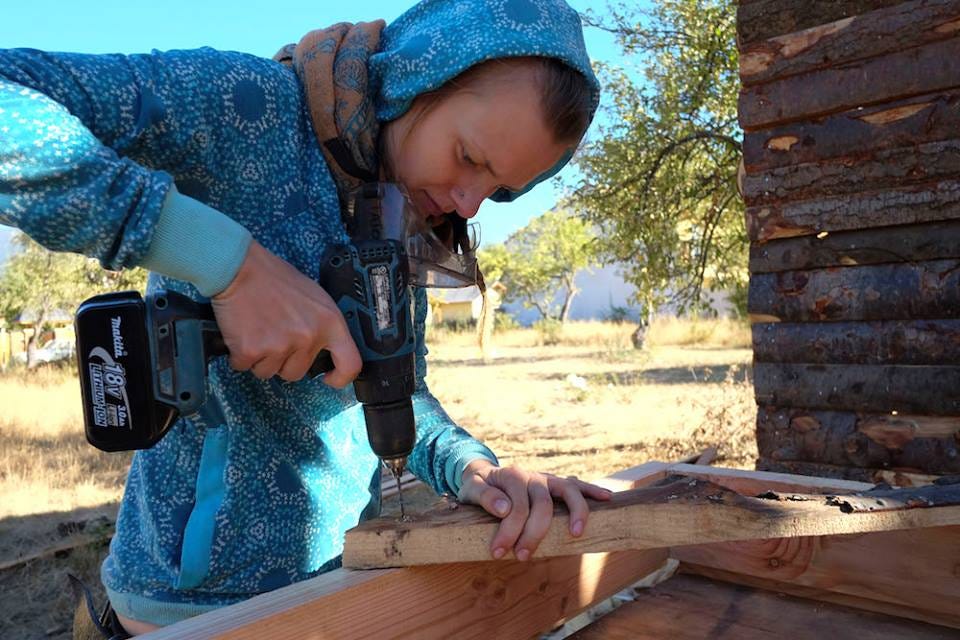
5. Food
You grow a big part, or even all of your food. You can complement the greenhouses with a small farm to grow your meat and eggs and have a source of milk and even cheese.
If you want to, you can produce everything you need. But you can also keep that small part of society in your life and buy the extra things.
What you grow are legitimate, chemical free, healthy and delicious foods, can only complement your health and your prosperity.
Obviously, you will have to learn how to look after and care for the plants and animals that become your food, but that is not so hard, I promise. Also, it’s actually fun and provides a physical activity to substitute for work outs.

6. Freedom
You are free of most of your monthly expenses. That means you don’t have to succumb to a job or activity you don’t like. You will still have to earn money, but it’d be a lot less, than you would normally need. You can earn that by doing what you like and get a small compensation for it altogether. For instance, you can do applied arts and sell your creation for a modest price. That is of course, if you want to. You can also work on the Internet and make your money online from the comfort of your home.
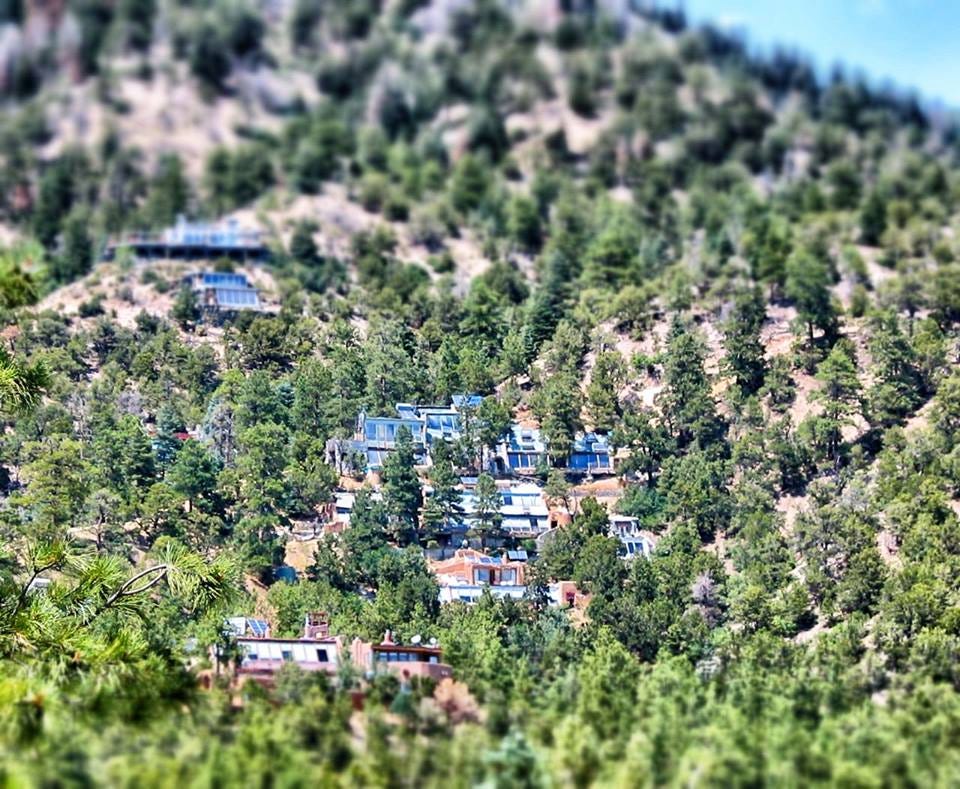
7. Inspiration
For many, this might not occur, but for an artistic soul, this home might be the perfect habitat to cultivate and boost your creativity to it’s maximum potential. It can be a sanctuary of creation and self improvement on numerous stages.
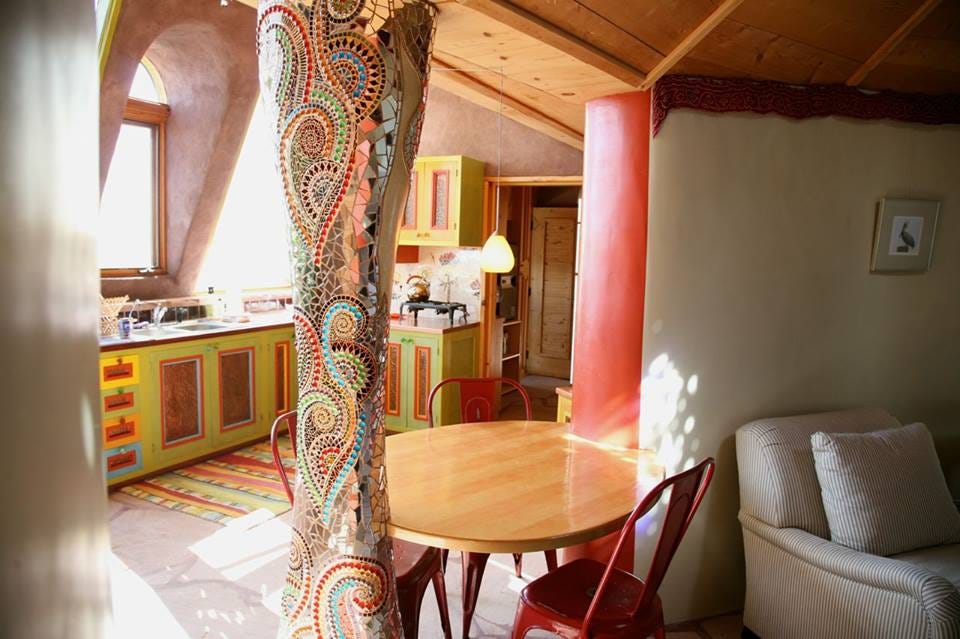
But don’t take only my word for it! Here is an interview with a lovely couple in their home and their experience living in an Earthship.
8. You Give Something Back To The Earth
I know being eco-friendly is too much of a hassle for humanity. I know we people only realise our mistake when it comes back to bites us on the arse… But for some mistakes, it might be too late if we wait for it to come back at us.
Our planet is slowly, but steadily losing it’s riches. We’re on the brink of exhausting a wide array of minerals, metal ores, fossil fuels, lumber and many other supplies on the Earth.
If we don’t change our lifestyles radically to include sustainability and integrate systems for use of renewable resources and energies, we will sooner or later kill the only planet we have.
The Earthship is maybe too radical an idea for the entire world, but it solves many of the global problems we face today. So why not give it a chance .. ?

There are communities like the Valhalla Movement which support and spread the bright idea of freedom of life in any form, without being a multimillionaire to afford it.

We can only hope the Earthship and many other concepts of better living grow into popularity and rise to fashion. The benefits of this way of living surpasses the downsides countless times. All we need is the proper idea and the heart to see it to reality.
Don’t forget to check out the brilliant movie on Raynolds, Earthship Biotecture, the Earthship and well…life - Garbage Warrior.
Who Made It Possible ?
